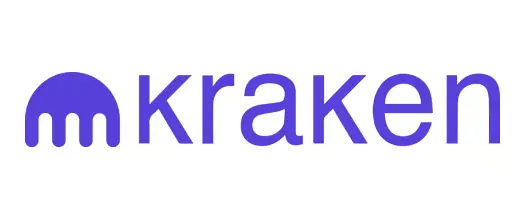As the popularity of cryptocurrencies continues to grow, the UK has emerged as a key market for digital asset trading. Crypto exchanges, which are platforms that allow users to buy, sell, and trade cryptocurrencies, play a central role in this ecosystem. In the UK, these exchanges operate under a developing but increasingly robust regulatory framework. The Financial Conduct Authority (FCA) is the primary body overseeing crypto activities, focusing on issues like anti-money laundering (AML) compliance and consumer protection.
 Axi
Axi Pepperstone
Pepperstone FP Markets
FP Markets Fusion Markets
Fusion Markets Coinbase
Coinbase Kraken
Kraken*the scores represent each platform’s Trustpilot rating, which is based on user reviews
Below, you can find more information about the best crypto trading platforms in the UK. All exchanges mentioned support GBP funding methods unless otherwise stated:
- Axi offers 24/7 crypto CFD trading with competitive, variable spreads and modest leverage, and states that there are generally no extra fees because trading costs are built into the quoted prices. It lists tradable markets like BTC, ETH, LTC and more, with pricing shown via bid/ask spreads.
- Pepperstone caters to crypto CFD traders with a published spreads list (e.g., BTCUSD, ETHUSD and more) and no commission on cryptocurrency CFDs; pricing is spread-only for these markets. 24/7 trading access is available across supported pairs
- FP Markets provides crypto CFDs on major coins (BTC, ETH, XRP, BCH, LTC) and publishes “typical spreads” per instrument; costs are primarily via the spread rather than separate exchange-style maker/taker fees. Trading is offered on MT4/MT5, cTrader and TradingView.
- Fusion Markets offers low-cost crypto CFDs with $0 commissions and spreads advertised from around 0.04% on Bitcoin and 0.09% on Ethereum, making it a competitive option for active traders. Live/average spread tools and product details are available on their site.
- Coinbase offers UK customers the chance to reduce their fees by increasing their trading volume and upgrading to the Advanced Trade tier. This upgrade also unlocks access to over 550 crypto pairs and higher staking rewards on qualifying balances.
- Kraken is well-known for offering tight spreads on Bitcoin and Ethereum, alongside competitive conditions for trading more than 350 altcoins. Its maker and taker fees are also low, particularly benefiting traders with high monthly volumes.
While the market remains dynamic and somewhat volatile, the UK government’s evolving approach to regulation aims to strike a balance between fostering innovation and safeguarding users. Understanding how these exchanges function, and how they’re regulated, is essential for anyone looking to participate in the UK’s crypto landscape. With this in mind, our team have prepared a range of comprehensive guides and reviews that offer an in-depth analysis of the UK’s crypto trading landscape.
Our Standards and Rating Methodology
Our methodology is designed to evaluate the performance of crypto exchanges using a research and analysis approach grounded in factual, up-to-date data and firsthand experience. We assess exchanges’ performance against industry benchmarks and focus on key factors that directly impact traders, which include trading fees, security measures, available cryptocurrencies, and payment methods, to name a few.
By employing an exhaustive evaluation framework, we provide traders with a clear understanding of each exchange’s strengths and weaknesses. Our aim is to provide readers with straightforward, factual information to help them make informed decisions. Whether you are a novice or an experienced trader, our methodology ensures that you will be able to navigate the dynamic crypto market with confidence and ease.
Factors We Assess During the Process of Crypto Exchange Evaluation
Given how crucial it is to pick the right cryptocurrency exchange for pretty much any aspiring crypto trader, we thoroughly assess exchanges based on a range of factors and seek to identify exchanges that are secure, efficient, and offer a user-friendly platform. This section offers a detailed breakdown of each factor we consider during the evaluation process:
- Regulation and Compliance: We prioritise platforms that are licensed and regulated by the FCA, but other tier-1 regulators also indicate a secure trading environment for crypto traders in the UK. These licences ensure that the exchange adheres to strict legal and operational standards. A regulated exchange is more likely to have a robust framework for handling customer complaints and resolving issues. Additionally, we examine the exchange’s history for any past regulatory violations, as these can indicate potential risks.
- Reputation: The reputation of an exchange within the trading community, particularly among UK traders, is a strong indicator of its reliability and service quality. We assess user reviews and feedback to gauge the overall satisfaction of traders. By choosing an exchange with a good reputation, traders can minimise the risk of falling victim to scams or fraudulent activities.
- Cryptocurrency Variety: The range of cryptocurrencies supported by an exchange is a key consideration for traders. While most platforms offer major coins like Bitcoin and Ethereum, a diverse selection of altcoins provides more opportunities for investment and trading.
- Platform: Examining the platform of a given exchange is essential. We assess the platform’s design, features, and how intuitive it is to use. Clear charts and easy-to-use tools can enhance efficiency and reduce the learning curve for new users. We also check if the exchange offers mobile apps, seeing as they enable traders to manage their portfolios and execute trades on the go.
- Trading and Non-Trading Costs: Our team always scrutinise an exchange’s trading fees and whether they are competitive in the broader sphere of crypto trading. Non-trading fees are also significant, and these may include deposit fees, withdrawal fees, inactivity fees, and more. Transparent pricing without hidden charges is a key consideration.
- Liquidity: Another crucial aspect of crypto trading, liquidity determines how easily assets can be bought or sold without causing significant price fluctuations. Our team carefully evaluate exchanges based on their trading volumes and order execution speeds, prioritising platforms with high liquidity. High liquidity ensures that traders can execute trades quickly and at desired prices, which is particularly important for those looking to capitalise on market opportunities. Exchanges with robust liquidity also tend to offer tighter spreads, further enhancing trading efficiency.
- Payment Methods: A reputable exchange should support a range of fiat-based payment options that are convenient for UK traders, including bank transfers, credit/debit cards, and other popular methods. Offering a variety of cryptocurrency payment solutions is also important.
- Educational Resources: Educational materials are invaluable for traders looking to improve their knowledge. Thus, we always make sure to gauge the quality and range of resources such as tutorials, webinars, market analysis, and news updates provided by exchanges. Platforms that invest in educating their users demonstrate a commitment to their clients’ long-term success.
- Security Measures: Security is a top priority in our evaluation process, seeing as it directly impacts the safety of users’ assets and personal information. We look for exchanges that implement advanced security protocols, such as two-factor authentication, cold storage for funds, and regular security audits. A secure platform protects users from potential threats such as hacking and fraud, providing peace of mind and fostering trust.
- Customer Support: Customer support is something that can significantly impact the reputation of a given crypto exchange. It is essential for resolving issues quickly and efficiently, which is why we evaluate the availability of support channels, such as live chat, email, and phone, as well as the responsiveness and expertise of the support team. Exchanges that offer 24/7 customer help are highly appreciated by our team.
Introduction to Cryptocurrencies
Cryptocurrencies are digital currencies that use cryptography for security, making them difficult to counterfeit. Unlike traditional currencies issued by governments, crypto coins operate on decentralised networks based on blockchain technology, a distributed ledger enforced by a network of computers. This decentralisation eliminates the need for intermediaries like banks, enabling peer-to-peer transactions.
Below, we offer an overview of some of the most popular cryptocurrencies that UK traders are likely to encounter as they explore crypto exchanges.
Bitcoin
Bitcoin (BTC), launched in 2009 by an anonymous entity known as Satoshi Nakamoto, is the first and most well-known cryptocurrency. It was created as a decentralised alternative to traditional fiat currencies, allowing users to conduct transactions without the need for intermediaries like banks. Bitcoin operates on a proof-of-work (PoW) consensus mechanism, where miners solve complex mathematical problems to validate transactions and secure the network. Its market capitalisation currency exceeds $1 trillion, and it is widely traded in the UK.
Ethereum
Ethereum, launched in 2015, is a decentralised platform that enables the creation of smart contracts and decentralised applications. Its native cryptocurrency, Ether (ETH), is used to power transactions and computational services on the network. Ethereum’s flexibility and programmability have made it a cornerstone of the decentralised finance (DeFi) ecosystem. The network transitioned from a proof-of-work to a proof-of-stake (PoS) consensus mechanism in 2022, significantly reducing its energy consumption.
Tether
Tether (USDT) is a stablecoin, a type of cryptocurrency designed to maintain a stable value by being pegged to a fiat currency, in this case, the US dollar. This coin serves to combine the benefits of crypto technology with the stability of traditional currencies.
Litecoin
Litecoin (LTC), created in 2011 by Charlie Lee, is often referred to as the “silver to Bitcoin’s gold.” It was designed to address some of Bitcoin’s limitations, such as slower transaction times and higher fees. Litecoin uses the Scrypt hashing algorithm that allows for faster block generation and lower energy consumption. In the UK, Litecoin is popular among crypto enthusiasts.
Dogecoin
Dogecoin (DOGE) started as a joke based on the popular “Doge” meme featuring a Shiba Inu dog, but despite its humorous origins, Dogecoin has developed a loyal community. Unlike Bitcoin, Dogecoin has no supply limit, and its low price and high supply make it accessible to traders who are just starting out.
How to Trade Cryptocurrencies in the UK
The crypto landscape in the UK offers various methods for traders to gain exposure to digital assets. This section explores the three primary ways to trade cryptocurrencies: spot trading, contracts for difference (CFDs), and futures contracts. Each method caters to different trading strategies and risk appetites, making it essential for traders to understand their nuances before diving in.
Spot Trading
Spot trading is the most straightforward method of trading cryptocurrencies. In this approach, traders buy and sell digital assets at their current market price, with transactions settled immediately. This means that ownership of the cryptocurrency is transferred directly to the buyer upon completion of the trade. Since there is no leverage involved, the risks are limited to the amount invested, making it a safer option for beginners. However, the lack of leverage also means that potential profits are not amplified, which may deter more aggressive traders.
Contracts for Difference (CFDs)
Crypto CFD (Contract for Difference) trading allows traders to speculate on cryptocurrency price movements without owning the underlying asset. In the UK, these instruments are typically offered by online brokers rather than traditional financial institutions, due to their digital nature and rapid market shifts.
However, since January 2021, the Financial Conduct Authority (FCA) has banned the sale of crypto CFDs to retail traders, citing high volatility, market manipulation risks, and lack of reliable valuation. This restriction aims to protect individuals from significant losses. As a result, only professional traders who meet specific criteria can legally access crypto CFD products through FCA-regulated platforms.
Futures Contracts
Futures contracts are essentially a wager regarding a given cryptocurrency’s future price, with the buyer agreeing to purchase the coin on a certain date at a specified price. These contracts are often compared to CFDs as both are considered particularly risky, and clients can use leverage when trading futures. Among professional traders, futures contracts are typically used for hedging.
Crypto Trading Regulation in the UK
In the UK, the Financial Conduct Authority (FCA) oversees certain activities in the crypto sector, though its regulatory reach remains limited and continues to develop. Firms conducting specific crypto asset operations, such as custody services or facilitating transactions for UK clients, must be registered with the FCA and adhere to anti-money laundering (AML) standards. This requirement applies to many crypto exchanges operating in the UK.
Despite this, the FCA does not regulate most crypto assets. Common cryptocurrencies like Bitcoin and Ethereum, categorised as “exchange tokens,” are not treated as financial instruments under FCA rules. As a result, individuals investing in these assets lack the protections typically offered to consumers of traditional financial products.
To date, only a limited number of firms have successfully registered with the FCA. Many applications have been declined or voluntarily withdrawn due to compliance challenges.
The FCA has laid out a long-term plan to expand its authority over the crypto market, targeting full regulatory integration by 2026. Ongoing consultations address areas such as market integrity, stablecoins, asset custody, and capital requirements.
This initiative aligns with the UK government’s broader goal of creating a clear and comprehensive regulatory structure for digital assets—one that echoes international developments like the EU’s MiCA framework and emerging policies in the United States.
Investor Protection and Security
Crypto exchanges operating in the UK must adhere to certain regulatory standards to ensure their activities are legal and secure. While the regulatory framework is still evolving, there are key requirements that these exchanges must fulfill to operate in compliance with UK law.
As of now, exchanges that offer certain services, such as crypto custody or trading services to UK-based clients, are required to register with the FCA’s crypto asset register. This registration is a necessary step for compliance with anti-money laundering (AML) and counter-terrorist financing (CTF) regulations.
Despite these regulations, the scope of FCA oversight is limited. Cryptocurrencies themselves, such as Bitcoin or Ethereum, are not regulated as financial instruments in the same way traditional assets are. This means that investors do not have the same protections for their crypto investments, such as access to the Financial Services Compensation Scheme or the Financial Ombudsman Service.
In the future, the UK government plans to expand the regulatory framework for cryptocurrencies, aiming for a more comprehensive set of rules by 2026. This would integrate crypto firms into the broader financial regulatory landscape, ensuring greater consumer protection and market stability.
Types of Crypto Exchanges
Cryptocurrency trading in the UK has grown significantly, with various types of exchanges catering to different investor needs. Understanding the distinctions between centralised, decentralised, and hybrid exchanges is crucial for selecting the right platform.
Centralised Exchanges
Centralised exchanges (CEXs) are the most widely used platforms in the crypto space, particularly among beginners. These exchanges are operated by companies that act as intermediaries, facilitating trades between users.
CEXs are known for their high liquidity, and they also offer trading features like margin trading, stop-loss orders, and fiat-to-crypto conversions, making them versatile for various trading strategies. Security measures on CEXs are robust, often including two-factor authentication and cold storage for funds.
However, users must trust the platform with their assets, as the exchange holds custody of private keys. This centralisation introduces risks, such as vulnerability to hacks or regulatory scrutiny. Despite these concerns, CEXs remain popular due to their user-friendly interfaces and compliance with local regulations, making them a reliable choice for those new to crypto trading.
Decentralised Exchanges
Decentralised exchanges (DEXs) operate without a central authority, enabling peer-to-peer trading directly between users. These platforms align closely with the core principles of cryptocurrency, emphasising privacy, security, and user control.
On DEXs, traders retain custody of their funds through self-custodial wallets, reducing the risk of hacks or mismanagement by third parties. Transactions are executed via smart contracts, ensuring transparency and immutability.
Hybrid Exchanges
Hybrid exchanges aim to combine the best features of centralised and decentralised platforms, offering a balanced trading experience. These exchanges provide the liquidity, speed, and user-friendly interfaces of CEXs while incorporating the security and autonomy of DEXs.
Users can enjoy non-custodial asset management, retaining control of their private keys while benefiting from faster transaction execution through off-chain trading mechanisms. Hybrid exchanges also support cross-chain trading, enabling users to trade assets across multiple blockchains seamlessly.
What Differentiates Crypto Exchanges From Brokers
Crypto exchanges and brokers serve as gateways to the world of cryptocurrency trading. However, they cater to different types of users based on their goals and preferences.
Crypto Brokers
Brokerages are well-suited for traders who are interested in a range of markets in addition to cryptocurrencies, including but not limited to forex, stocks, and commodities. They give their users the opportunity to trade a modest range of cryptocurrencies solely via CFDs, and the deposit solutions brokers support are typically fiat-based.
To trade crypto CFDs, clients will typically use the broker’s proprietary software or one of the following platforms:
- MetaTrader 4 (MT4): A widely used trading platform favoured by retail traders for its user-friendly interface and robust features. It supports trading in various assets, including cryptocurrencies like Bitcoin and Ethereum. MT4 is known for its extensive library of technical indicators and support for automated trading through Expert Advisors (EAs).
- MetaTrader 5 (MT5): As the successor to MT4, MT5 is popular among crypto enthusiasts and offers enhanced functionality, including more order types, timeframes, and technical indicators. It also supports unlimited trading signals and improved charting tools.
- cTrader: Developed by Spotware Systems, cTrader offers advanced tools like one-click trading, level II pricing, and detachable charts. The platform’s cryptocurrency market screener helps traders identify promising investment opportunities.
- TradingView: TradingView stands out for its advanced charting tools and social trading features. It provides real-time market data, a wide range of technical indicators, and the ability to back test trading strategies. The platform’s instrument selection includes cryptocurrencies, forex, commodities, and more.
Cryptocurrency Exchanges
Crypto exchanges, on the other hand, function as decentralised or centralised marketplaces where users trade directly with one another. Prices on exchanges are determined by supply and demand.
Crucially, exchanges offer access to a wide range of cryptocurrencies, including lesser-known or speculative coins. These platforms also allow clients to top up their balances via cryptocurrencies, but fiat payment solutions are often supported as well.
We should stress that cryptocurrencies and crypto derivatives are the only types of markets offered by exchanges. Thus, they are mainly suitable for individuals who wish to trade cryptocurrencies directly and are looking to gain exposure to a plethora of coins. These users must also be comfortable with a given exchange’s proprietary platform.
Brokers, on the other hand, are great for traders who merely want to dip their toes into crypto trading through CFDs. UK traders must keep in mind that crypto CFDs are tradable only by professional traders registered with brokers under the FCA regulation. Due to the high volatility of this market and the risk of trading with leverage, the FCA has deemed crypto CFDs unsuitable for retail traders.
Popular Order Types at Crypto Exchanges
Cryptocurrency exchanges offer a variety of order types to help traders execute their strategies effectively. Order types are at the core of trading cryptocurrencies, and each one serves a unique purpose in the volatile crypto market:
- Market Orders: These are the simplest and fastest order types, allowing traders to buy or sell cryptocurrencies immediately at the best available market price. While they guarantee execution, they are susceptible to slippage, especially in highly volatile markets. Market orders are ideal for traders prioritising speed over price precision.
- Limit Orders: Limit orders enable traders to set a specific price at which they want to buy or sell. The order only executes if the market reaches the specified price or better. This provides greater control over execution prices but does not guarantee immediate fulfilment. Limit orders are suitable for traders who have a target price and are willing to wait for the market to reach it.
- Stop Orders: Stop orders are designed to limit losses or protect profits by triggering a market order once a specified stop price is reached. For example, a stop-loss order can automatically sell an asset if its price drops to a predetermined level. While useful for risk management, stop orders are vulnerable to slippage during rapid market movements.
There are different types of stop orders. Stop-limit orders, for example, trigger a limit order once the stop price is reached. Stop-market orders, on the other hand, convert into market orders once the stop price is reached.
- Take Profit Orders: These orders automatically close a position once a specified profit target is reached. Take profit limit orders sell at a specific price or better, while take profit market orders sell at the best available price once the target is hit. These orders help lock in gains without requiring constant market monitoring.
- Trailing Stop Orders: A dynamic order type, trailing stop orders adjust the stop price as the market price moves in the trader’s favour. This allows traders to lock in profits. For example, if the market price rises, the stop price follows at a set distance, but if the price falls, the stop price remains fixed.
By leveraging these order types, traders can tailor their strategies to suit their objectives, whether they aim to capitalise on market movements, minimise losses, or automate their trading process. Choosing the right order type depends on factors such as market volatility, liquidity, and individual risk tolerance, making it a critical skill for successful crypto trading.
Fundamental and Technical Analysis
Fundamental and technical analysis are two essential approaches in crypto trading. Each offers unique insights into market behaviour that can dictate a trader’s best course of action.
Fundamental Analysis
Fundamental analysis evaluates the intrinsic value of a cryptocurrency. This entails examining factors such as the underlying technology of the coin, its team’s expertise, the whitepaper, and the market conditions.
It is particularly useful for long-term investors seeking to identify undervalued assets with growth potential. By understanding the “why” behind a cryptocurrency’s value, traders can make informed decisions based on the project’s long-term viability and competitive advantages.
Technical Analysis
On the other hand, technical analysis focuses on historical price data, patterns, and indicators to predict future price movements. It is widely used by short- and medium-term traders to capitalise on market volatility, but it is important for investors as well. Key tools in technical analysis include:
- Oscillators: These indicators, such as the Relative Strength Index (RSI) and Stochastic Oscillator, help identify overbought or oversold conditions, signalling potential reversals.
- Moving Averages: Simple Moving Averages (SMA) and Exponential Moving Averages (EMA) smooth out price data to reveal trends and momentum shifts.
- Bollinger Bands: These measure volatility and highlight potential reversal zones when prices touch the upper or lower bands.
- Support and Resistance Levels: These horizontal lines indicate price levels where buying or selling pressure is likely to emerge, guiding entry and exit points.
- Volume-Based Indicators: Tools like On-Balance Volume (OBV) and Volume Profile assess trading activity to confirm the strength of price movements.
- Trend Lines: Diagonal lines connecting price points help visualise trends and potential breakout or breakdown levels.
- Chart Patterns: Patterns like head and shoulders, double tops/bottoms, and triangles provide insights into potential trend reversals or continuations.
- Continuation Patterns: Flags, pennants, and triangles indicate that a trend is likely to persist after a consolidation phase.
To summarise, fundamental analysis is ideal for long-term investment strategies, and technical analysis is crucial for traders aiming to profit from short-term price swings. However, combining both approaches provides a holistic view of the market and allows one to make well-rounded decisions, making them crucial for anyone planning on delving into the cryptocurrency market.
Additionally, it is essential to avoid common pitfalls, such as over-reliance on a single indicator, ignoring market fundamentals, or succumbing to emotional trading. By mastering these analytical methods and implementing sound risk management, traders can navigate the volatile crypto market more effectively.
Taxation and Costs at Crypto Exchanges
In the UK, cryptocurrency trading is primarily subject to Capital Gains Tax (CGT). In some situations, the Income Tax may apply depending on the nature of the transactions and activities involved.
CGT is triggered when you dispose of crypto assets. Disposal includes selling crypto for fiat currency (e.g., GBP), exchanging one cryptocurrency for another (e.g., Bitcoin for Ethereum), using crypto to buy goods or services, or gifting it (excluding transfers to a spouse or civil partner).
There is also a tax allowance, which for the 2024/2025 tax year was estimated to be is £3,000, reduced from £6,000 in the previous year. Any profits exceeding this allowance will be subject to CGT.
Starting on October 30, 2024, the rates for CGT on crypto assets are:
- 18% for basic rate taxpayers (earning up to £50,270)
- 24% for higher and additional rate taxpayers (earning over £50,270)
If you receive cryptocurrency as income, your profit may be subject to an Income tax. Activities such as mining, staking rewards, airdrops (if considered income), or receiving crypto as payment for goods or services are all considered a form of income from cryptocurrencies. Income tax rates range from 0% to 45%, depending on your income band.
Apart from taxes, crypto trading in and of itself involves additional costs that any aspiring trader should be aware of. Below, you can familiarise yourself with the most common fee types found at exchanges.
Maker/Taker Fees
Crypto exchanges typically charge trading fees categorised as maker and taker fees. Makers add liquidity to the market by placing orders that are not immediately matched, incurring lower fees, often ranging from 0% to 0.2%. Takers, who remove liquidity by matching existing orders, face higher fees, typically up to 0.5% or more. Some exchanges use a tiered fee structure, where fees decrease as trading volume increases.
Spreads
The spread, or the difference between the buy and sell price of a cryptocurrency, acts as another trading cost. A wider spread increases trading costs, as traders buy at a higher price and sell at a lower one. Spreads are a fundamental aspect of trading pretty much any financial instrument, and this includes crypto products.
Withdrawal and Deposit Fees
Exchanges may charge fees for depositing and withdrawing funds. While deposit fees might not be quite as common, withdrawals are generally accompanied by fees. Withdrawing fiat currency via credit cards or wire transfers typically incurs higher surcharges compared to bank transfers or cryptocurrency deposits. Costs typically come in the form of flat fees or a percentage of the withdrawn amount.
Account Maintenance Fees
Some exchanges impose monthly or yearly fees for maintaining an account. These fees are less common but can add to the overall cost of trading, especially for long-term investors.
Inactivity Fees
Inactivity fees are charged when an account remains dormant for a specified period, usually ranging from 3 to 24 months. These fees are designed to cover maintenance costs and can catch infrequent traders off guard. Do note that these fees are charged on a monthly basis, and only apply if the user has funds in their account balance.
The Benefits and Drawbacks of Trading Crypto in the UK
All in all, trading cryptocurrencies at UK exchanges can be a high-risk, high-reward activity that requires a thorough understanding of the market. It also has its own set of benefits and drawbacks that aspiring traders should be aware of:
Benefits
- The UK’s regulatory environment, led by the FCA, ensures a secure and transparent trading ecosystem.
- At exchanges, users can engage in various forms of trading crypto, including spot trading.
- Transactions are protected by advanced cryptographic techniques and are recorded on a public ledger called a blockchain. This use of blockchain technology ensures transparency, security, and immutability of transactions.
- Crypto trading can be useful for individuals who are interested in hedging.
- Cryptocurrency trading is available 24/7.
Drawbacks
- Cryptocurrencies are known for their extreme price volatility, which can result in significant losses if proper risk management strategies are not utilised.
- Exchanges only offer cryptocurrency trading, meaning anyone who is also interested in other markets will need to create a separate account at an online broker.
- The complexity of cryptocurrency trading can be a barrier for novices, and the risk of losing money due to a lack of experience is high.